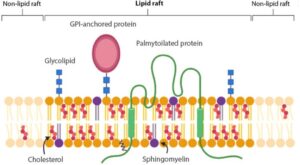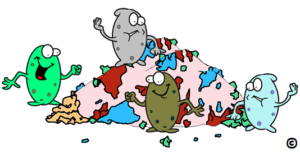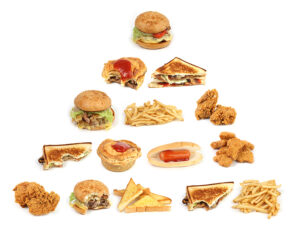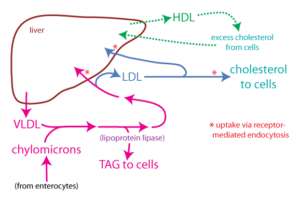Cholesterol. The name is enough to drive many of us under the table waving a white flag. It immediately brings dark visions of heart attacks, strokes, and umpteen types of cardiovascular diseases, each more debilitating than the other.
But is it really so? Let’s look at this in some depth and see where the truth really lies.
At Arbuza, we believe that in order to understand something, especially in science where it should be evidence-based, this allows us to break the myths so as to make well-informed decisions around health and hence life.
This article is our little effort to help you understand cholesterol by going through these topics:
- What is cholesterol
- Its role, origins and metabolism
- Role of HDL and LDL
- Atherosclerosis (aka plaque in arteries)
- What really is responsible for this
- And at last, the verdict
We hope that next time there is a discussion around cholesterol, you will know very well what the game is all about!
Cholesterol is essential to our life. It is not only necessary for the production of key hormones such as testosterone and oestrogens, the bile acids needed to digest and absorb fats, as well as to make vitamin D. It is also an essential structural building block for all cell membranes, and in particular the internal membranes without which a cell cannot function, as well as the surface rafts on which receptors are bunched-up to increase response efficiency. And this is particularly true for the cells of our nervous and immune systems.

Figure 1: The Mammalian Cell Membrane
But where is cholesterol coming from and how can it get high in the circulation?
About 70% of the cholesterol in our circulation is synthesized exclusively in the liver through a series of multiple biochemical steps, starting with a molecule known as acetyl-CoA (step 1 in the figure below) which itself results from our utilization of carbohydrates and fats for energy production. The remaining 30% are of dietary origins, mainly animal products such as eggs and red meat.
During the process of absorption by the intestine, dietary cholesterol is first transformed into bile acids (step 2) which, upon reaching the liver, will be regenerated into cholesterol and made ready for export via VLDLs (very low-density lipoproteins), which are further metabolized to LDLs (low-density lipoprotein, step 3)), which then supply cholesterol to peripheral tissues for metabolic purposes (step 4).

(Kriaa, 2019)
Figure 2: Cholesterol Metabolism
Given the facts above, why are cholesterol-rich foods being blamed for increased blood cholesterol? And what are they?
- The cholesterol-rich foods are eggs, cheese, shellfish, pastured steak, organ meats, and full-fat yogurt but these are also nutritious foods that make healthy additions to every day’s diet.
- Fast foods, processed meats, ultra-processed packaged foods, fried foods and sugary desserts are also cholesterol-rich foods, but they are also rich in saturated fats, trans-unsaturated fats and phospholipids that should be least in your diet for reasons exposed below.
What people usually do is limit the intake of foods from list 1 above, thinking they will increase their cholesterol levels, while bingeing on foods from Group 2, unknowingly doing themselves much more harm than good.
Much more harm than good? Why is that?
Simply because in our intestine, absorption of dietary cholesterol is very inefficient and because intestinal bacteria will use a large part of this cholesterol.

Figure 3: The intestinal micobiome at work
Some of it will be incorporated into their own membranes (a process known as “entrapment”) while an even greater part will be converted into coprostanol which is then either excreted with the faeces or further metabolized by the intestinal microbiome, depending upon our diet.
And that is where we reach the first crucial point.
The greater the amount of coprostanol produced by our gut microbiome, the lower the cholesterol absorption by our intestine because coprostanol, which cannot be absorbed, attenuates cholesterol uptake by blocking access to its receptor in the gut.
But,
1) the higher the amount of saturated fat consumed, the lower the amount of coprostanol produced, and therefore the greater the amount of dietary cholesterol absorbed, and
2) the greater the amount of hard to digest fibres in our diet, the greater the amount of coprostanol that will be transformed by the microbiome into useful molecules our intestine will absorb, thereby not only attenuating cholesterol absorption but also providing us with energy-rich molecules known as “ketone bodies”.
Hard to digest fibres also tend to trap indispensable nutrients such as minerals. That is one of the reasons which make them so useful to both us and our intestinal microbiota.
Note: Foods containing desirable hard to digest fibres includes seasonal vegetables and fruits and high fibre cereals.
But a diet rich in saturated fats, tans-fats and phospholipids has another far nastier effect.

How does that come about?
Through a very sneaky process indeed.
In our diets, cereals are the richest source of choline while processed foods are the richest source of phospholipids (lecithins), which are used to prevent lipid oxidation, one of the major causes of quality deterioration. When the two are consumed together, carnitine, an ally made by the kidney, liver and brain, and transported to other tissues for transferring fatty acids to mitochondria and energy production, turns into an enemy.
Intestinal bacteria degrade a significant proportion of ingested choline-containing phospholipids, together with carnitine, into betaine and to trimethylamine (TMA). Both betaine and TMA are absorbed. In both the liver and the intestine, TMA is further metabolized to trimethylamine-N-oxide (TMAO) which is then absorbed and accumulated by macrophages, causing foam cell formation, leading to and enhancing arterial plaque formation, thus promoting atherosclerosis, heart disease, hardening of the arteries, diabetes, etc.

Figure 5: from foods to TMAO
Hence, the bogey-man here isn’t dietary cholesterol at all but dietary phospholipids, saturated fats and trans-fats, of which we shall speak later, as well as lack of hard-to-digest fibres in our diet. A diet rich in saturated fats, trans-fats and phospholipids, all the more so if it also is poor in hard-to-digest fibres, will invariably promote high blood cholesterol levels.
And what about LDL (low-density lipoproteins), often called “bad” cholesterol, and HDL (high-density lipoproteins), the so-called “good” cholesterol?
What we are dealing with here are the cholesterol transporters in the blood.
Cholesterol transport is a two ways process:
- transport from the liver to the other organs, which, as we have seen above, is mediated by LDLs, and
- transport of cholesterol back to the liver either directly by HDL, or indirectly by transferring the cholesterol from HDL to VLDL or LDL.

But why should LDL be branded as “bad cholesterol”?
Simply because LDL can stick to arterial walls while HDL hardly can.
So, that’s what will cause deposition of atherosclerotic plaque and narrowing or arteries, isn’t it?
Well…NO!
As we have seen above, atherosclerotic plaque is caused by foam cells, which are macrophages loaded with not only cholesterol alone but mainly with trimethylamine-N-oxide (TMAO) which doesn’t originate from cholesterol at all but from choline-containing saturated/trans-fats and phospholipids.
Furthermore, atherosclerotic plaque isn’t formed on the inner surface of arterial walls, but within the arterial wall itself.
For that to occur, the cells lining the inner surface of the artery, called “endothelial cells”, have first to become dysfunctional so that LDL can penetrate inside the wall. Once inside, LDL will be modified by oxidation and other such chemical processes, attracting macrophages which will absorb this modified LDL and get rid of it by breaking it down.
However, if these macrophages are already loaded with TMAO, instead of metabolizing LDL, they will transform into foam cells which will then give rise to the formation of plaque and eventually to atherosclerosis.
Hence, the problem isn’t at all that LDL can stick to the inner surface of arteries. The problem is that should the cell lining the inner arterial surface become dysfunctional, they will let a plethora of circulating components penetrate into the wall, amongst which LDL.
But then, how can these endothelial cells be damaged in the first place?
That’s where we once again have to go back to what was in our diet.
Excess circulating free fatty acids, resulting from a fats-rich diet, directly mediate endothelial dysfunction through mechanisms including impaired insulin signaling and nitric oxide production, oxidative stress, inflammation and the activation of the renin-angiotensin system.
Endothelial cells produce vasoconstrictor substances, such as endothelin and angiotensin II. Angiotensin II not only acts as a vasoconstrictor but is also pro-oxidant and stimulates the production of endothelin. Endothelin and angiotensin II promote the proliferation of arterial wall smooth muscle cells and thereby contribute to the formation of plaque. Activated macrophages and vascular smooth muscle cells, characteristic cellular components of atherosclerotic plaque, produce large amounts of endothelin, hence implementing what may become a vicious circle leading to full-fledge atherosclerosis.

So, it would seem that dietary fat is the real bogey-man of the story and should be avoided, no?
Well, that’s right: NO! It’s no because not only do we absolutely need to consume fats to stay healthy but mainly because “fat” isn’t a single entity but a huge family of molecules.
The Fats in our diet

Fats are not only one of the main sources of energy for the body, the type of fat and the total amount of fat consumed daily also play important roles in maintaining the state of health.
Dietary fat is composed predominantly of triglycerides (TGs; 98%), which are themselves made of fatty acids (FAs), with small amounts of phospholipids and sterols. Thus, fatty acids are the building blocks of fat in our bodies and in the food we eat.
During digestion, fats are broken down into fatty acids which can then be absorbed into the blood. Fatty acid molecules are usually joined together in groups of three, forming triglycerides.
Should you like to know more about fatty acids, go to the end of this paper.
For our purpose however, suffice it to say that there are three major fatty acids families, represented in the figure below, with very distinct properties, roles and functions.

Saturated fatty acids are straight chains that are primarily used for energy production and storage into adipose tissue, while unsaturated fatty acids are used to produce other building blocks.
Unsaturated fatty acids come in two forms: trans- and cis-unsaturated fatty acids.
Naturally occurring unsaturated fatty acids (the cis-unsaturated forms) make a kink at the unsaturated sites. Trans-unsaturated fatty acids, largely produced artificially, don’t. They remain straight. And that changes everything for the metabolism.
The problem is that our metabolism sees trans-unsaturated fatty acids, which are straight chains, as if they were fully saturated and all of a sudden encounters huge problems in breaking them down for energy production and that leads to these remaining in circulation as free fatty acids for long periods.
Since free fatty acids can easily cause damage to endothelial cells, diets rich in saturated fats, and more particularly in trans-unsaturated fats and phospholipids (lecithins), present a real danger of atherosclerosis pathogenesis, infinitely more so than cholesterol-rich foods.
The verdict and take-home message
In conclusion, it isn’t the so-called “cholesterol-rich” foods that should be avoided, but foods rich in saturated fats, trans-unsaturated fats and phospholipids, all the more so if, on top of it all, they are poor in hard-to-digest fibres. We did not say “do not eat foods rich in saturated fat such as in butter, ghee, cheese, palm oil, coconut oil, Jalebi, gulab jamun, samosa, chocolates, cakes, pastries, burgers, biscuits, etc”. We we say “eat them sparingly, as a small part of your diet”. At Arbuza, we love ghee and we have a French cofounder… so, you can imagine how much we love cheeses! But those are to be enjoyed in moderation. The same goes with Jalebi and samosa, etc.
So, the next time you pick up some food or a snack and think it is high in cholesterol and it would elevate your blood cholesterol, ask yourself: Is this rich in trans-unsaturated fats and phospholipids? Is this rich in fibres that have trapped other useful nutrients?
Our simple message, and indeed our philosophy, is that moderation is important. When we listen to our hunger cues, when we have a connection with our body, and also if we are satisfied in other areas of our life (see the circle of life image below) we’ll likely find that we feel satiated quite quickly after eating nourishing foods that contain fats.

As always, contact us or speak to a doctor for more individualized recommendations.
SOME HANDY TIPS
| · Store oils in a cool place away from sunlight to prevent them from going rancid (bad). |
| · We can make our own salad dressings and marinades at home as opposed to buying industrially made options, thus saving money while having more control over the product. Please find a trick to make the easiest salad dressing at the end of the document |
| · Enjoy grilled, steamed, broiled, or baked foods more often than those that are fried or deep-fried.
· Moderation is the key |
| · If purchasing packaged foods, read the ingredient lists and nutrition labels for insight on saturated fats, trans-fat and lecithin (phospholipid) content. |
SUMMARY
- Fat helps give your body energy, protects your organs, supports cell growth, and helps your body absorb vital nutrients. When you focus too much on cutting out all fat, you can actually deprive your body of what it needs most
- Choose whole food sources of fat over oils when possible. Foods which include fats, fibre, vitamins, and minerals provide indispensable nutritional benefits.
- Dietary fiber is found mainly in fruits, vegetables, whole grains and legumes.
HANDY GUIDE FOR COMPARISON OF DIETARY OILS

A quick look at what fatty acids are.
Fatty acids are named according to the length of their carbon chains (e.g. C18 mean a length of 18 carbon atoms) and their degree and forms of unsaturation. For example, C18:0 mean a fully saturated form ready for break down and energy production; C18:1 means a mono-unsaturated form ready for transformation into metabolic intermediates or for saturation and break down; C18:2 means a poly-unsaturated form and C18:3ω3 means a poly-unsaturated form with 3 unsaturated sites, the last of which is located 3 carbon atoms from the end of the chain.
Saturated fatty acids are straight chains that are primarily used for energy production and storage into adipose tissue, while unsaturated fatty acids are used to produce other building blocks. This is why some poly-unsaturated fatty acids, such as linoleic acid (LA; C18:2ω6, omega 6) and alpha-linolenic acid (ALNA; C18:3ω3, omega 3) are considered as essential fatty acids since these cannot be synthesized in the body. LA and ALNA are further elongated and desaturated by our metabolism to give rise to the physiologically important long-chain derivatives such as arachidonic acid (20:4ω6), eicosapentaenoic acid (EPA; 20:5ω3) and docosahexaenoic acid (DHA; 22:6ω3).
